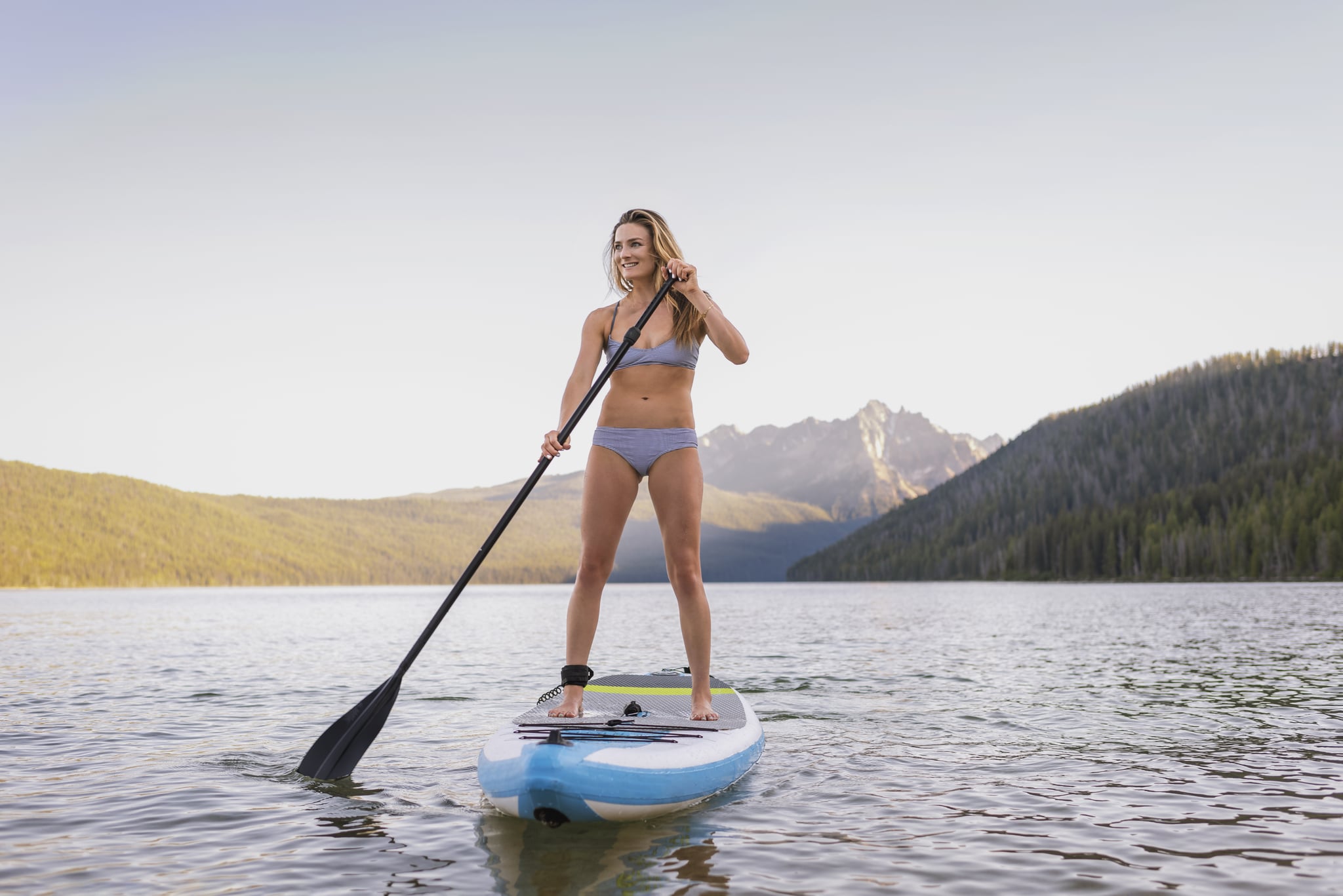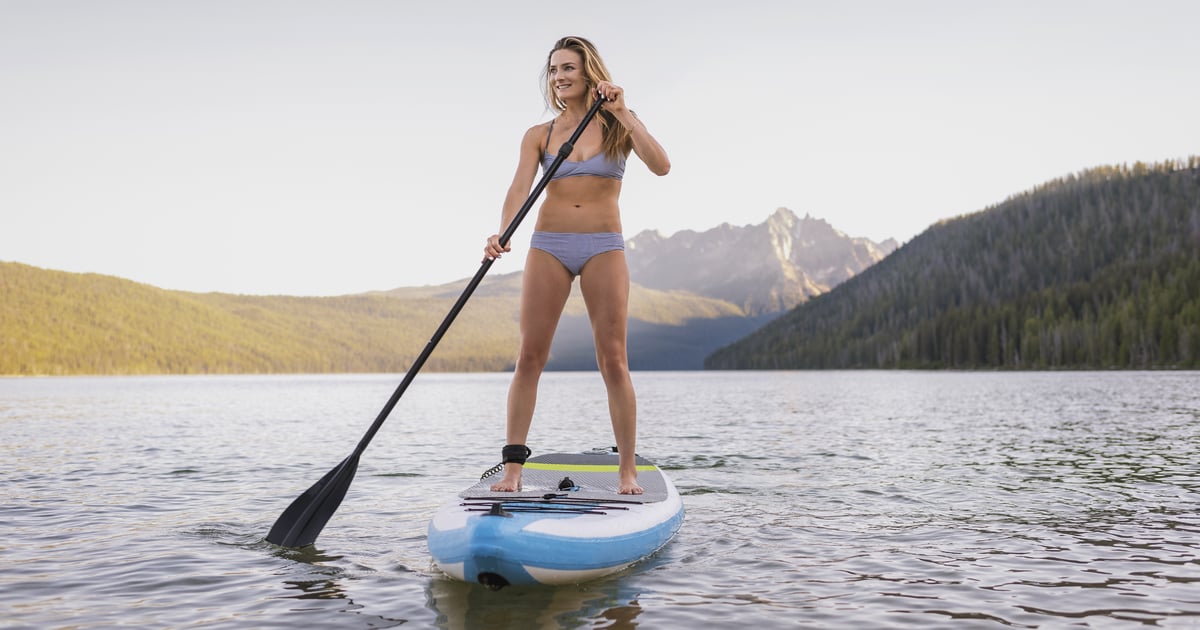
Even if it’s your first time on a paddleboard, practice patience and give yourself 60 minutes — that’s all it takes to get comfortable on the water, Jaime Fiske, PSUPA-certified stand-up paddleboard instructor and co-owner of SUP Marble, says.
Place the board in the water, climb on, start paddling on your knees to get a feel of the board, and wait to stand up at least two board lengths from the shore, Fiske adds.
Once comfortable, you have two options: check today’s workout off your to-do list or relax into a meditative state. Here’s what it looks like to accomplish both.
According to Fiske, you define how hard you want to work on the paddleboard.
“There are 10 muscles paddleboarding works: the heart, quadriceps, hamstring, rhomboid, lats, traps, triceps, biceps, rotator cuffs, and abs,” Fiske says.
Different strokes target different muscles. If you want to activate your rhomboids, lats, traps, triceps, and biceps in multiple ways, Fiske suggests exploring various paddling techniques like the draw stroke, brake stroke, sweep stroke, crossbow stroke, and pivot turn. (You can find breakdowns of each stroke here.)
For an intense cardio session, Fiske recommends the power stroke — also known as the forward stroke — which is great for finding stability and can help you propel straight forward through the water.
No matter your technique, though, you should feel your lungs activate from your breath, your heart pump quicker from your paddle strokes, and your quadriceps and hamstrings ignite, thanks to finding your balance on the board, Fiske says.
“The rotator cuff is activated by lifting the paddle out of the water to switch hand positions. The abs are activated through opening up the rotator cuff, spinning the heart to the sky on the catch of the forward paddle.”
Once you find a clear mind, your body can relax, and stress melts away, Fiske explains — “like walking on water.”
Whether amid a sweat session, a leisurely outing, or a calm meditation moment, Fiske urges you to take in all the details of your surroundings: “You feel the fresh air in your lungs, see the fish underwater, feel the power of the glide through the propulsion created by the paddle stroke, smell fresh pines or ocean air, touch the cool or warm water, hear the birds chirping or the crashing of waves, and taste the salty air or the fresh air of the lake.”
It could take some practice until you can smoothly experience a hypothetical like the one we just dreamed up — but remember, with practice you can get there.
Renting a paddleboard and signing up for lessons (that abide by social distancing rules, of course!) is a great — and safe — way to get started. Plus, that way you won’t invest your money in a board (or hobby!) that’s not right for you.
And always keep Fiske’s best beginner tip in mind as you go: “Keep breathing, jump in the water for a swim, have fun, and ‘find your voyage to tranquility.'”
Click here for more health and wellness stories, tips, and news.
